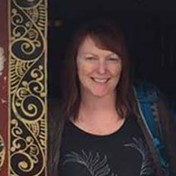
By Ellen Hall
Travel expert21 Jul 2021 - 6 Minute Read
The scorpion in our bed should have been the last straw. Already that night, our ecolodge had almost burned down in a generator fire. Now, we stared down at four inches of glossy black venom, squeezing and unsqueezing itself like a miniature accordion as it crawled slowly across the sheet where my pillow had been.
So much for a night of newly wedded bliss.
* * * *
When we told people we were going to Guyana for our honeymoon, we got a lot of blank stares. “That’s in Africa, right?” some said. Others knew it only as the site of the infamous Jonestown massacre in the ‘70s that gave us the phrase “drinking the Kool-Aid”. To be honest, we didn’t know much about this small South American country either. But we knew it had birds – a new obsession of ours. The Guiana Shield is one of the last pristine rainforests in the world, home to some 800 bird species along with jaguars, caiman, and other jungle life.
Tourism in Guyana was still in its infancy in 2009, and the challenges were apparent immediately. At one jungle lodge, where we were the only guests, the British managers shared their struggles with getting supplies. Over the bony, leftover piranha they had to serve us instead of chicken, they confessed that, a month into their six-month stint, they were already considering throwing in the towel.
But tourism has many benefits for Guyana, giving the indigenous Amerindians an employment alternative to logging or mining, and giving the government an incentive to keep the forest intact. We later learned that our British host felt so strongly about this that he once had a fist fight about it with Johnny Rotten (of Sex Pistols fame) in a London pub. Rotten was apparently of the belief that people benefit the rainforest best by staying away.
We were glad we hadn’t, though. On canopy walks, sweaty hikes, and serene river paddles, we saw raucous macaws, tiny, brilliantly colored manakins, gangly spider monkeys, and curious river otters. Our nature guides seemed equipped with superpowers, identifying birds with their naked eyes when I could barely find them with my binoculars.
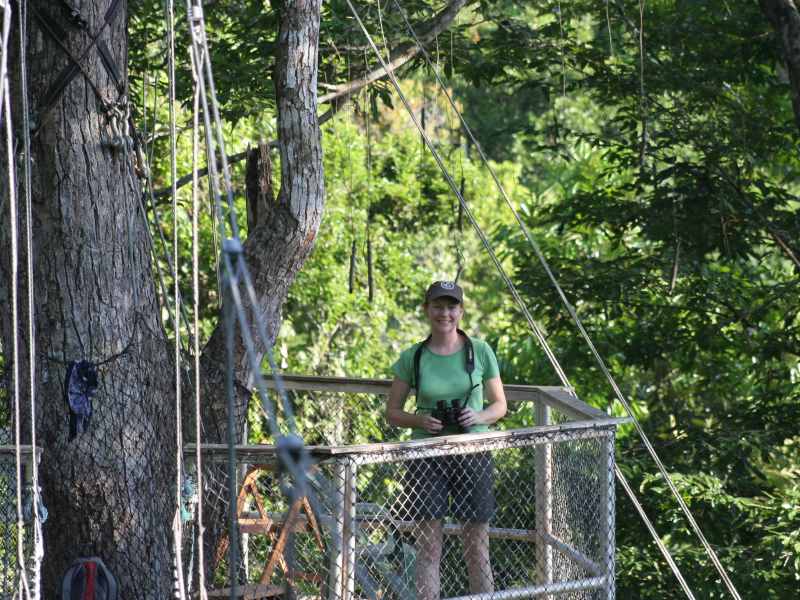
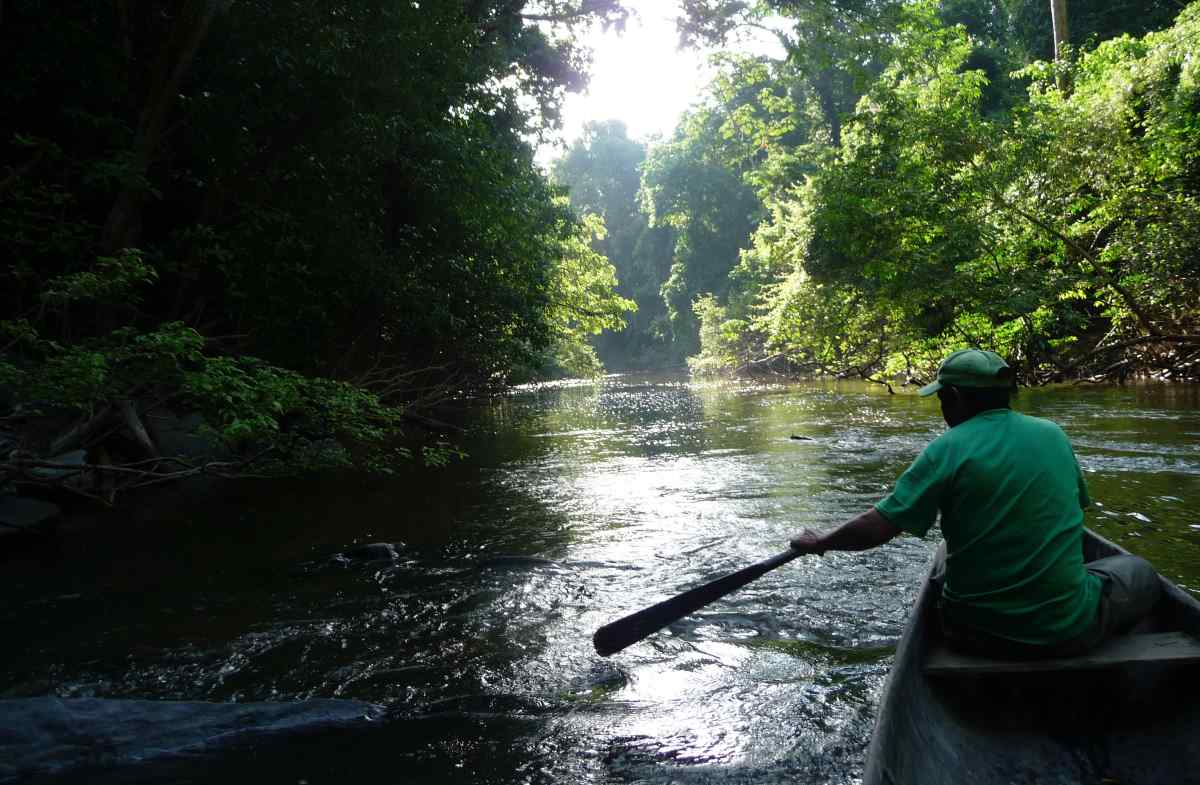
Over our two-week stay at five different lodges, we’d go for forest walks in the cool mornings, laze in a hammock in the afternoon, and cruise the river at dusk (to see the giant Victoria amazonica water lily), and after dark (when our flashlights caught the gleaming yellow eyes of black caiman).
Our last stop in the jungle was Karanambu Lodge, set in 10mi2 (26km2) of savannah, marshy ponds, and riparian forest, along a 30mi (48km) stretch of the Rupununi River in southwest Guyana. The owner was the legendary Diane McTurk, known as the “Otter Lady” for her expertise at rehabilitating Giant River Otters. Arriving after a long, hot boat ride down the river, we were greeted with glasses of Diane’s famous rum punch and shown around by the manager, a short-haired, raspy-voiced woman named Pat.
Karanambu is the kind of place where a horse might wander up to the main lodge and stick its head through an open window while you’re having breakfast, or a semi-tame racoon might steal things from your backpack. There was usually an otter or two on site, being rehabilitated. While we were there, the resident otter was Buddy, who was blind, making his rehabilitation much more problematic. He lived in a small building not far from the main lodge and went down to the river with the local children every day to play and learn how to catch fish.
We were shown to our thatched-roof cabin, which had flat canopies hanging over the bed and shower. We soon learned why when we saw the bats nesting in the thatch overhead. Anything not under the canopy ended up with a dusting of bat guano and urine.
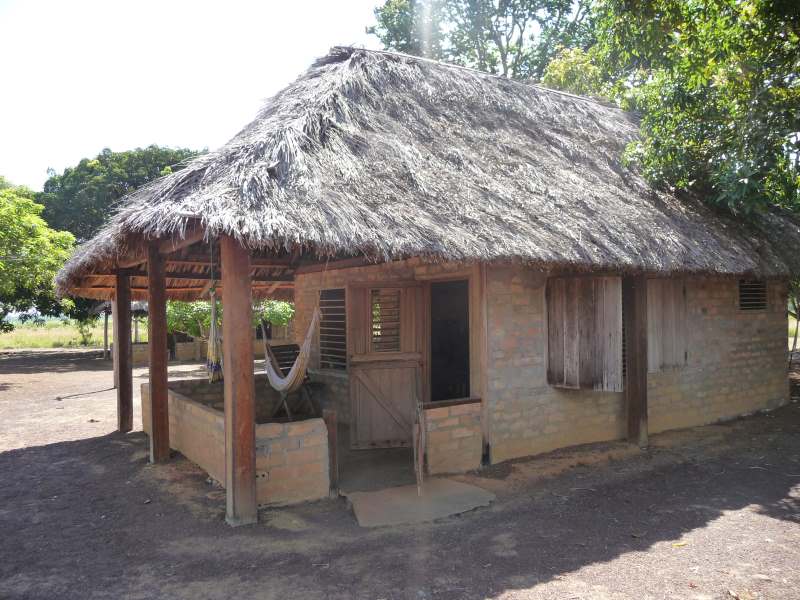
Relaxing in hammocks in the main lodge, one of the other guests – an ornithologist well accustomed to travels in the jungle – said, “It’s not the guano you need to watch out for. It’s the piss.” Minutes later, a bat peed on my leg.
But as Pat pointed out, that’s just the way things are in the jungle. Diane’s family had owned the ranch for generations, but the challenges of life in this remote area were apparent here, too. Being off the grid, the ranch was reliant on propane for cooking and the water pump, and generators for the lights and power plugs.
One night, while we were in the main lodge relaxing before dinner, the lights suddenly went out. A hundred yards away, a thatched-roof building erupted in flames. For a horrified moment, we thought it was the otter house – we could hear Buddy squealing in panic – but it was the generator hut next to it.
As we stood gaping, unsure what to do, Pat ambled up, smoking a cigarette. “This is just what I need,” she rasped dryly. Soon she had organized a brigade of sand buckets, and the fire was put out before it could spread to the other buildings. The generator, though, would have to be replaced.
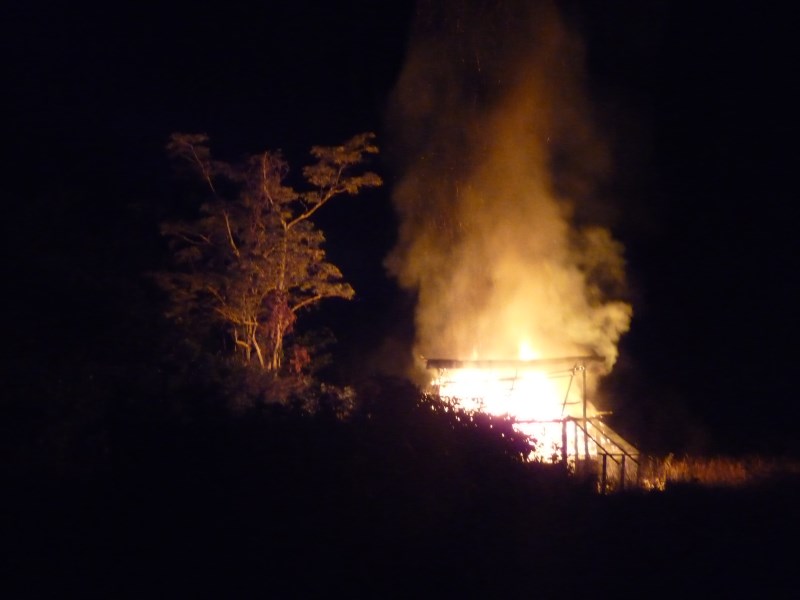
That should have been plenty of excitement for one night. But when we turned in later, we saw a cockroach clinging to the inside of our mosquito net. My husband Edwin knocked it down, and it darted under a pillow. He lifted the pillow to shoo it out – and there was the scorpion.
Pat was busy in another cabin, dealing with a foot-long centipede. So, after we recovered from our panic, Edwin trapped the scorpion with a glass and disposed of it. But it still makes me shudder to imagine what would have happened if we hadn’t discovered it, and I had nestled into bed and tucked my hands under my pillow as I normally do.
We spent the next morning watching Buddy frolicking in the river. Diane, who had been less than patient with our “trauma” over the scorpion the night before, was boundlessly patient with Buddy. Lean, white-haired, and leathered, she sat in the current on a fallen log, cooing as the four-foot-long, sleek brown otter leaped on her like a puppy. I had been fascinated with Giant River Otters for years but had only seen glimpses of them before, and was now able to watch one at close range for hours.
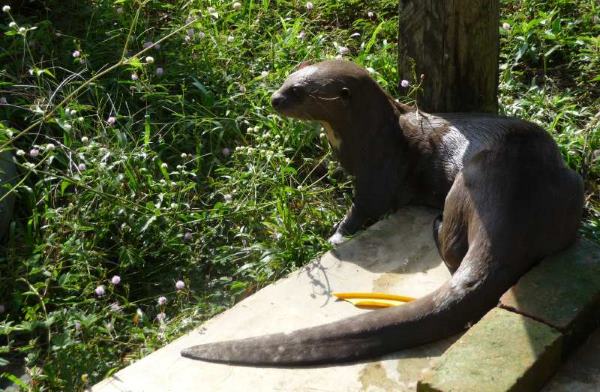
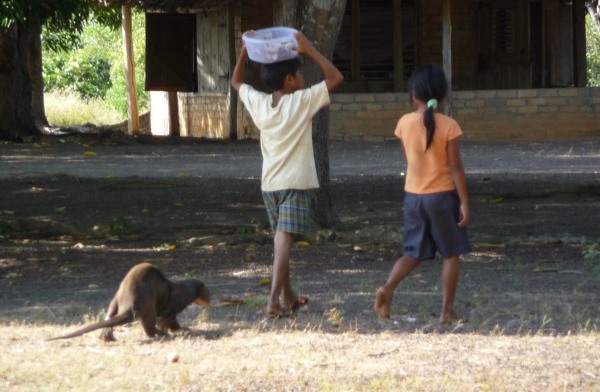
Guyana wasn’t quite through with us yet. The flight we’d planned to Kaieteur Falls – a 741ft (226m) single-drop waterfall – on our final day was cancelled because we were the only passengers. But Edwin managed to book us a private charter – just the pilot, our guide, an airline employee, and us. As we swooped over the falls in our tiny plane, my jaw and stomach dropped. On landing, we had the falls all to ourselves. We trekked through the jungle on a rocky path crisscrossed with roots (the airline employee following us gamely on stiletto heels). Our guide showed us bright-yellow poison dart frogs the size of a fingernail, nestled in massive, nine-foot bromeliad flowers.
The path wound along the edge of a deep gorge, offering increasingly dramatic views of the falls as they crashed down into the ravine. During the spring, when the cascade is at its fullest, the volume of water is astonishing (the most of any single-drop waterfall on earth), but the falls themselves can be hard to see through all the mist. On this October day, they were still impressive, and we were able to sit right beside them, on a jutting rock ledge, our legs dangling into the green-carpeted gorge below. There were no selfie-snapping crowds, no tourist boats jammed with poncho-wearing passengers – only us, and the falls, and virgin rainforest stretching to the horizon.
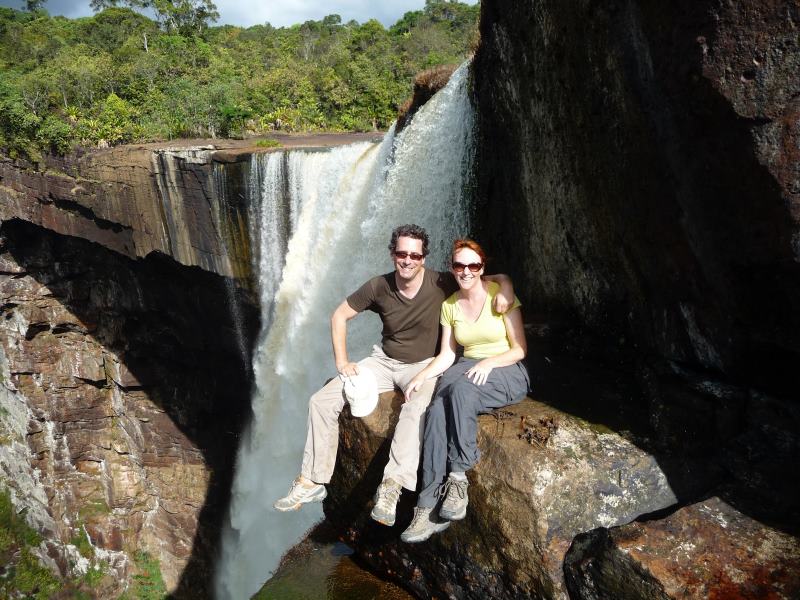
Guyana, like life, isn’t always easy. Sometimes it delivers a sting out of the blue, or a rain of feces from above. Sometimes it’s a long, sweaty journey with a promise of rum punch at the end. And sometimes it offers a slice of the sublime – a quiet place above the thunder, where problems and challenges dissipate in a cloud of mist.
Discover similar stories in
connection
Travel expert
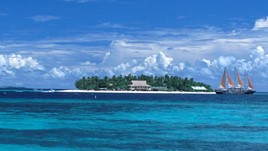
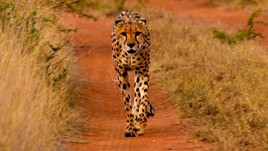
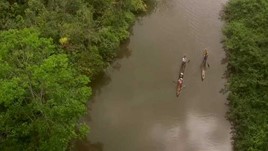
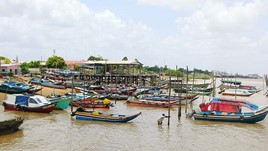
No Comments